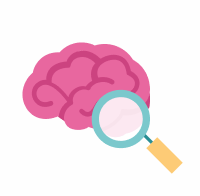Getting Started
Welcome to the AD Knowledge Portal docs site!
What’s here for you?
Read about the background of the portal and how it fits into the bigger data-sharing picture.
Learn how to Navigate the Portal and understand Information Architecture within the Portal.
Learn how to Access Data on the Portal.
Explore integrations with external Analysis Platforms such as CAVATICA.
Discover how to Contribute Data to the Portal.
What do you need to get started?
Before you dive in, here’s a breakdown of what you’ll need to get started using the portal:
Exploring data
Thanks to the open science principles that the portal is built on, anyone can browse its content!
Downloading data
In order to download data, you will need to register for a Synapse account and, in doing so, agree to the Synapse Code of Conduct and Synapse Terms and Conditions of Use
Synapse is the backend and datastore of the AD Knowledge Portal. You can read more about the relationship between the AD Knowledge Portal and Synapse here.
Some data on the portal is controlled access data and requires an additional submission of an Intended Data Use Statement and a completed Data Use Certificate (DUC). Access request review time is one to two weeks. We recommend submitting your request as soon as possible. Once approved, data may be used for one year. You must submit a renewal before the conclusion of one year, otherwise your access will be revoked.
Find more detailed information on data access here.
Using data
Data on the portal is available for General Research Use (GRU), with no embargo on publications. If you plan to use any data downloaded from the portal in any publications, whether it is open access data or controlled access data, you must include an official acknowledgement of the data contributors. Learn how to find and use pre-written acknowledgement statements here.
Contributing data
Data contribution to the Portal is primarily funded through several NIA-supported programs.
However, if you have data, analyses, or tools that may benefit Alzheimer’s disease research, you may be eligible to become a Community Contributor and have your resources hosted in the AD Knowledge Portal. You must apply to be considered. Contributions will be evaluated based on relevance to Alzheimer’s disease, complementarity to existing data, and unmet needs.
